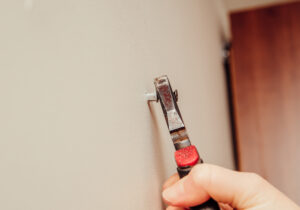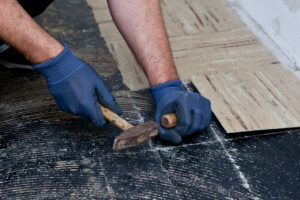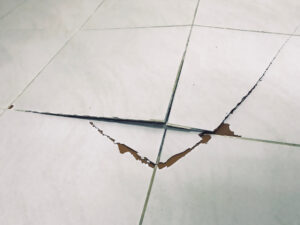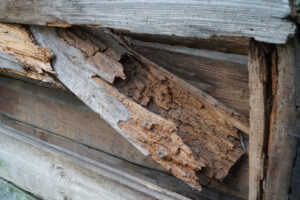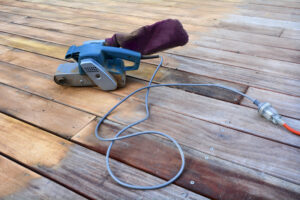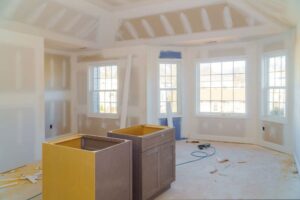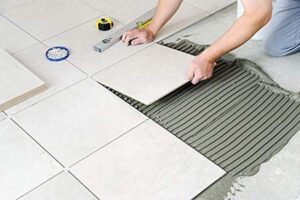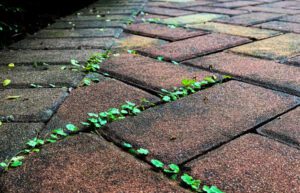When it comes to dealing with a woodworm infestation, many homeowners wonder if bleach, a common household product, can be an effective solution.
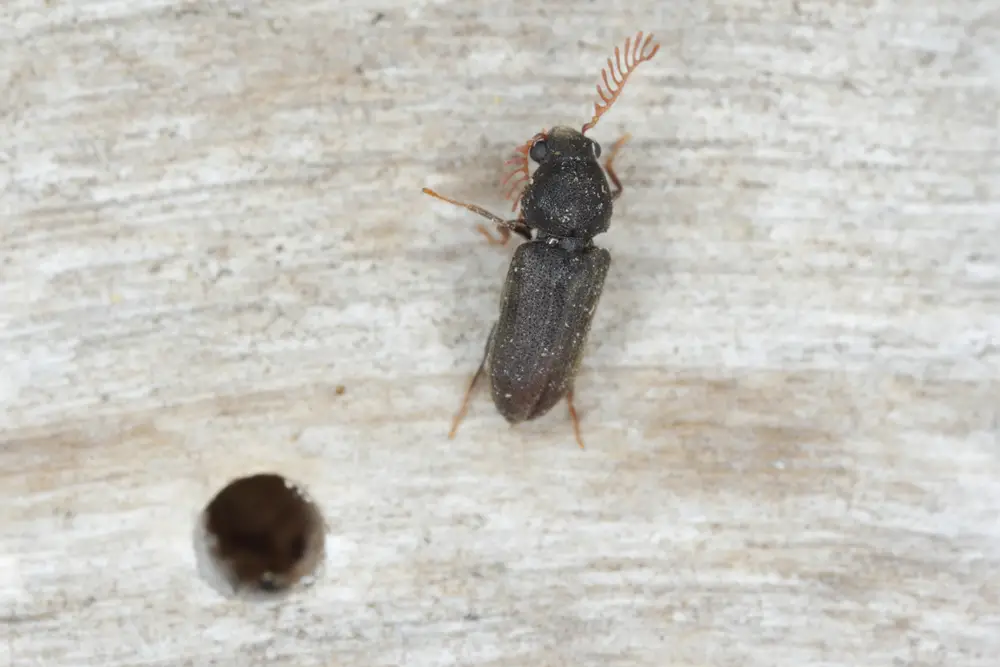
In this article, I will explore the use of bleach as a woodworm treatment and discuss its advantages and disadvantages. I will also delve into different methods of using bleach for woodworm treatment and provide alternative options to consider.
Key Takeaways:
- Bleach can be used as an affordable and accessible woodworm treatment.
- It contains sodium hypochlorite, which is effective in killing woodworm larvae and adult beetles.
- However, bleach may not be the safest method, as it can corrode or stain finished wood surfaces.
- Different methods of using bleach include bleach baths and spraying the solution onto the wood.
- Alternative woodworm treatment options include boric acid, diatomaceous earth, sunlight exposure, freezing, and the use of parasitic wasps.
Advantages and Disadvantages of Using Bleach for Woodworm Treatment
When it comes to treating woodworm infestations, using bleach has its advantages and disadvantages. Let’s take a closer look at both sides of the coin.
Advantages of Bleach
- Affordability: Bleach is a cost-effective option for woodworm treatment, making it accessible to a wide range of homeowners.
- Woodworm eradication: Bleach contains sodium hypochlorite, which is effective in killing woodworm larvae and adult beetles on wood surfaces.
- Minimal long-term damage: Unlike some other treatment methods, bleach does not cause significant long-term damage to the wood, making it suitable for localized or furniture infestations.
- Stain removal: Bleach can also remove stains and dye from wood, restoring its appearance.
Disadvantages of Bleach
- Ineffectiveness for larger pieces of wood: Bleach may not be as effective for treating larger pieces of wood that cannot be fully submerged, as it requires proper penetration for successful eradication.
- Loss of stain and dye: While bleach can remove stains, this feature should be considered carefully, as it may result in the loss of desired stain or dye on the wood.
It’s important to weigh the advantages and disadvantages of using bleach as a woodworm treatment before deciding on the best course of action. While bleach can be an affordable and accessible option, it may not be the safest or most effective method for comprehensive woodworm eradication.
| Advantages of Bleach | Disadvantages of Bleach |
|---|---|
| Affordability | Ineffectiveness for larger pieces of wood |
| Woodworm eradication | Loss of stain and dye |
| Minimal long-term damage | |
| Stain removal |
Different methods of using bleach for woodworm treatment
When it comes to treating woodworm infestations, bleach can be a cost-effective solution. However, it’s important to use the right method for effective treatment. Here, I will explain the different methods of using bleach as a woodworm treatment.
Bleach bath
A bleach bath is an effective method for treating small furniture items that are infested with woodworm. To create a bleach bath, dilute bleach according to the instructions and submerge the furniture item in the bath. Leave it for the designated time to allow the bleach to penetrate the wood and kill the woodworm larvae and adult beetles. After the treatment, rinse the item thoroughly with clean water to remove any residue. This method is suitable for localized infestations or small pieces of furniture.
Spraying bleach
Spraying bleach onto the wood is an option for treating larger items that cannot be fully submerged in a bleach bath. However, this method requires caution and proper safety precautions. Before spraying bleach, make sure to wear protective clothing and do the treatment in a well-ventilated area. Apply the bleach evenly on the affected areas, ensuring thorough coverage. Allow the bleach to sit on the wood for the recommended time, and then rinse the wood with clean water to remove any residue.
Submerging wood in bleach
Submerging wood in a bleach solution is another method that can be used for smaller pieces of wood. Fully submerge the wood in a mixture of bleach and water, following the recommended proportions. Allow the wood to soak in the bleach solution for the designated time. Afterwards, rinse the wood thoroughly with clean water to remove any bleach residue. This method ensures that the bleach penetrates the wood and effectively kills the woodworm infestation.
It’s important to note that regardless of the method used, safety precautions should always be followed when using bleach as a woodworm treatment. Make sure to read and follow the manufacturer’s instructions, wear protective clothing, and work in a well-ventilated area to avoid any potential harm.
Other woodworm treatment options and considerations
When it comes to treating woodworm infestations, bleach is just one of the options available. There are several other methods and substances that can be used to effectively eradicate these pests and protect your wooden structures. Here are some alternative woodworm treatment options to consider:
Boric Acid:
Boric acid is a naturally occurring mineral that has proven to be effective against woodworm. It can be applied as a dust or mixed with water to create a spray. When the woodworm larvae come into contact with boric acid, it damages their exoskeletons and eventually leads to dehydration, effectively killing them.
Diatomaceous Earth:
Diatomaceous earth is a non-toxic powder that can be used to eliminate woodworm infestations. The powder works by dehydrating the woodworm larvae and causing them to die. It is important to note that diatomaceous earth should only be used in dry areas, as moisture can render it ineffective.
Sunlight Exposure:
Exposing infested wooden items to direct sunlight can be an effective way to kill woodworm larvae. The heat and UV rays from the sun can penetrate the wood and eliminate the pests. However, it is crucial to ensure that the wood is properly treated and protected from moisture, as excessive exposure to sunlight can cause the wood to dry out and potentially crack.
Freezing:
For smaller wooden items that can fit into a freezer, freezing can be a viable woodworm treatment option. Placing the infested items in a freezer at temperatures below -20°C (-4°F) for several days can kill the woodworm larvae. However, it is important to note that freezing may not be effective for larger items or items with a high moisture content.
Parasitic Wasps:
Another method of woodworm treatment involves the use of parasitic wasps. These tiny insects lay their eggs inside the woodworm larvae, effectively killing them. However, the implementation of this method requires careful consideration to prevent any disruption to the local ecosystem and ensure that the parasitic wasps are targeting only the woodworms and not other beneficial insects.
While bleach can be a cost-effective option for treating woodworm infestations, it is important to explore alternative treatments and consider the specific requirements of your situation. Each method has its advantages and limitations, and choosing the most appropriate woodworm treatment option will depend on factors such as the extent of the infestation, the type of wood, and the potential impact on the surrounding environment. Consulting with a professional or a pest control specialist can provide valuable guidance and ensure that the chosen treatment method effectively eliminates woodworm and protects your wooden structures in the long term.
| Treatment Option | Method | Effectiveness | Considerations |
|---|---|---|---|
| Boric Acid | Dust or spray | Effective in killing woodworm larvae | Handle with care, avoid inhalation or ingestion |
| Diatomaceous Earth | Application as a powder | Dehydrates woodworm larvae | Use in dry areas, avoid moisture |
| Sunlight Exposure | Direct exposure to sunlight | Kills woodworm larvae | Protect wood from excessive heat and cracking |
| Freezing | Placing infested items in a freezer | Kills woodworm larvae | Not suitable for larger items or those with high moisture content |
| Parasitic Wasps | Introduction of parasitic wasps | Kills woodworm larvae | Requires careful implementation to avoid disrupting local ecosystem |
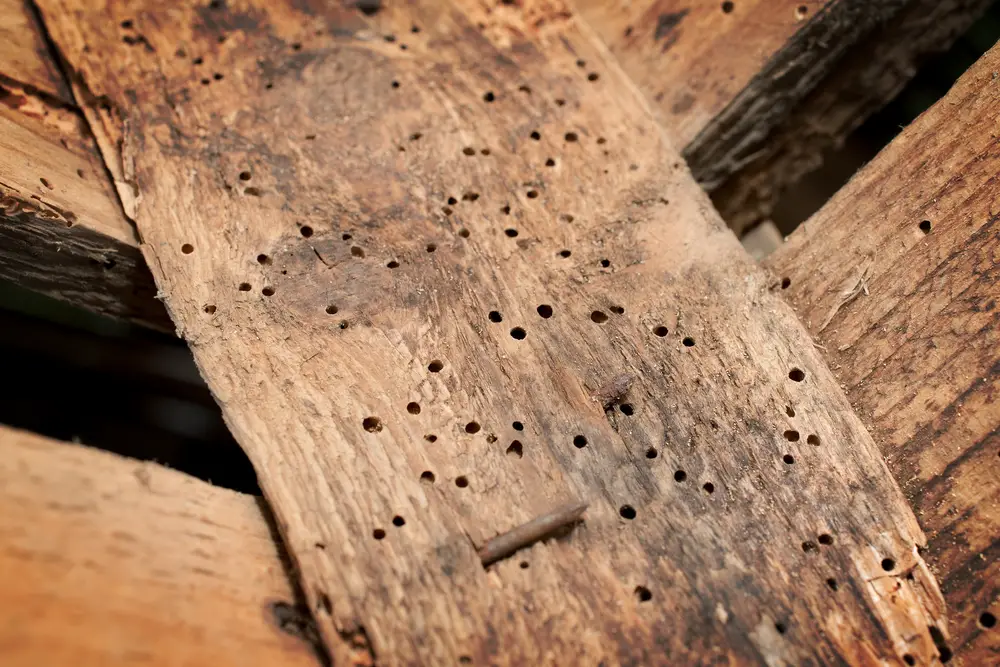
Conclusion
After exploring the use of bleach as a woodworm treatment, it is clear that while it can be a cost-effective option, it may not be the safest or most effective method for complete woodworm eradication. Although bleach can kill woodworm larvae and adult beetles, its ability to penetrate deep into the wood and provide long-term protection is limited. Therefore, for thorough woodworm treatment and to ensure the structural integrity of timber beams, it is advisable to seek professional help or utilize specific woodworm treatment products.
Professional treatment guarantees the proper identification and targeted treatment of woodworm, ensuring the longevity of the wood. These experts have the knowledge and experience to handle woodworm infestations effectively and prevent any further damage. Additionally, they can provide recommendations for ongoing woodworm prevention measures to safeguard your property against future infestations.
While it may be tempting to use bleach as a quick and accessible solution, it is crucial to follow the manufacturer’s guidelines and use protective clothing to prevent any harm. The improper use of bleach can lead to surface corrosion or staining on finished wood, which may compromise its appearance. To achieve the desired results without any potential risks, it is best to consult professionals who can provide expert advice and assistance in woodworm eradication.
FAQ
Does bleach kill woodworm?
Yes, bleach can be used as a household product to treat woodworm infestations. It contains sodium hypochlorite, which is effective in killing woodworm larvae and adult beetles on wood.
What are the advantages and disadvantages of using bleach for woodworm treatment?
Advantages of using bleach include its affordability and the ability to kill woodworm without causing long-term damage to the wood. However, bleach may not be effective for treating large pieces of wood and can cause the loss of stain and dye on the wood.
What are the different methods of using bleach for woodworm treatment?
One method is creating a bleach bath for small furniture items. For larger items, spraying bleach onto the wood can be an option. Submerging the wood in a bleach solution is suitable for smaller pieces of wood.
Are there any other woodworm treatment options and considerations?
Yes, besides bleach, other options include using boric acid, diatomaceous earth, sunlight exposure, freezing, and parasitic wasps as a biological control. These methods should be implemented carefully to avoid harm and disruption to the wood and local ecosystems.
Should I seek professional help for woodworm treatment?
For thorough woodworm eradication and to ensure the structural integrity of timber beams, it is recommended to seek professional help or use specific woodworm treatment products.
- Drill Battery Maintenance: Essential Tips for Cordless Drill Battery Care - February 5, 2024
- Troubleshooting Drill Issues - February 5, 2024
- Quick Drilling Techniques - February 2, 2024

